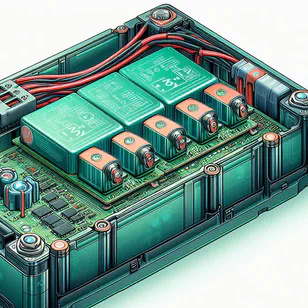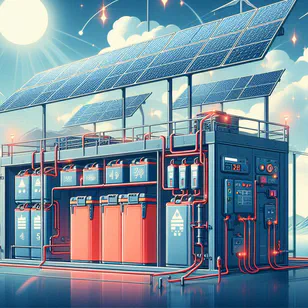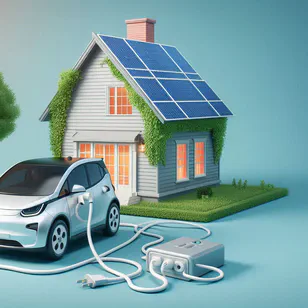Introduction
Batteries store electrical energy in chemical form and can release it as electric current when needed. They are widely used to power various devices, including mobile phones, laptops, car starters, and more. In solar energy systems, batteries play a crucial role in energy storage and distribution.
Electric batteries utilize chemical reactions to store and release energy. They consist of two or more electrodes separated by an electrolyte. During discharge, chemical reactions occur in the electrodes and electrolyte, converting chemical energy into electrical energy.
One of the most common examples of an electric battery is the automotive starter (flooded lead-acid) battery.
Batteries with Different Voltages
Batteries come in various voltage ranges depending on their construction and application. The main types of batteries with varying voltages include:
a) Low-voltage batteries: These are batteries with a voltage up to 12 volts. They are widely used in devices like car batteries (12V), motorcycle batteries (6V or 12V), and batteries for portable electronics (3.7V or 7.4V).
b) Mid-voltage batteries: These have voltages ranging from 12 volts to several hundred volts. They are used in solar power systems, electric vehicles, electric scooters, and other energy storage systems. Examples include lithium-ion batteries with voltages of 48V, 72V, 96V, and more.
c) High-voltage batteries: These range from several hundred volts to several kilovolts and are used in large-scale energy storage systems like power plants, electrical grids, and industrial applications. For example, lithium batteries with voltages of 400V, 800V, and higher are commonly used.
Important: Solar power stations typically use mid-voltage batteries, such as 12/24/48V, and high-voltage batteries of various voltage values.
Modern Battery Types: Lead-Acid, AGM, GEL, Carbon, LiFePo4
There are many battery types, with new ones constantly being developed. In this section, we’ll focus on the most well-known types used in solar energy systems:
1. Lead-Acid Battery Starter

The lead-acid battery with a flooded electrolyte, more commonly known as a car starter battery, is budget-friendly but not suitable for solar power stations due to its design for short bursts of power (such as starting a car). Using car batteries in solar systems can lead to rapid degradation due to continuous high-power demand.
2. AGM (Absorbent Glass Mat) Battery

Developed in the 1970s, the AGM battery represents the next stage in lead-acid battery evolution. These are maintenance-free, sealed batteries where the electrolyte is absorbed into a glass mat. AGM batteries can be used in solar systems with a discharge rate of 20–25% of their capacity. For example, a 100Ah AGM battery can handle a 230V load of up to 240–310W.
3. GEL Battery

GEL batteries were developed in the 1930s and use an electrolyte in gel form. These batteries are safer, as the gel prevents spills and leakage, even when the battery is tilted or damaged. GEL batteries also have a long lifespan, handling up to 800 cycles at 100% discharge depth. They are suitable for solar systems but come with a higher price tag.
4. Carbon Battery

Carbon or graphene-based batteries are an improvement on AGM and GEL technologies. These sealed and maintenance-free batteries offer up to 2000 cycles at a 100% discharge depth, making them a solid choice for solar systems. However, they also tend to be more expensive.
5. LiFePo4 (Lithium Iron Phosphate) Battery

LiFePo4 batteries were developed in 1996 and are known for their high safety, stability, and long life, making them ideal for modern solar energy systems. With a lifespan of over 9000 cycles, LiFePo4 batteries are a preferred choice in electric vehicles and large-scale energy storage. They provide consistent voltage output, simplifying system design for solar stations.
Explore more about the advantages of LiFePo4 Battery, check articles:
- Choosing the Right BMS for DIY LiFePO4 Battery Packs
- Why JK BMS with Active Balancing is Replacing DALY on the Market ;
- Hidden Dangers When Buying Chinese 48-Volt LiFePO4 Batteries
- Explanation of what the “For UPS” marking on a lithium battery indicates
Conclusion
Choosing the right battery for your solar power system depends on your needs and budget. While lead-acid batteries may seem cost-effective, they aren’t suited for continuous power supply needs. AGM, GEL, carbon, and LiFePo4 batteries offer improved performance and are better options for solar installations. Each type has unique advantages in terms of longevity, maintenance, and power output, allowing you to find the best fit for your system.




